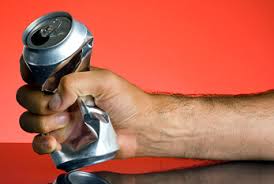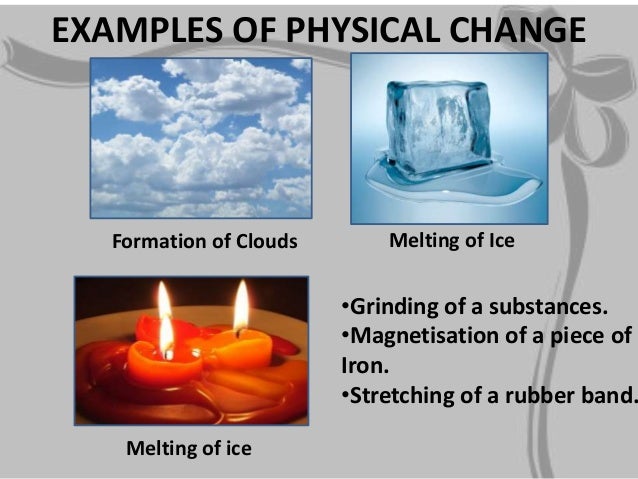

#Examples of physical changes series
Some chemical changes are extremely small and happen over a series of steps. Rusty pipes in abandoned buildings are real world examples of the oxidation process. The molecules change their structure as the iron is oxidized, eventually becoming iron oxide (Fe 2O 3). You can watch the process happen over a long period of time. Iron (Fe) rusts when it is exposed to oxygen gas in the air. The oxygen in the air reacts with the sugar and the chemical bonds are broken. Fire activates a chemical reaction between sugar and oxygen. Burning a sugar cube is a chemical change. Melting a sugar cube is a physical change because the substance is still sugar. Those bubbles are evidence of the chemical changes. In this example, you may see bubbles of oxygen (O 2) gas.

However, behind the scenes, billions of chemical bonds are being created and destroyed. The chemical change as hydrogen peroxide (H 2O 2) becomes water cannot be seen since both liquids are clear. While some experiments show obvious chemical changes, such as a color change, most chemical changes are not visible. The water molecules are still water molecules.Ĭhemical changes happen on a much smaller scale. No chemical changes took place when you melted the ice. Physical actions, such as changing temperature or pressure, can cause physical changes. You added enough energy to create a phase change from solid to liquid. When you melt an ice cube (H 2O), you have a physical change because you add energy. No chemical bonds were created or broken. Also, since this was a physical change, the molecules in the can are still the same molecules.

It wasn't a change in the state of matter because the energy in the can did not change. However, you only changed the shape of the can.

When you step on a can and crush it, you have forced a physical change. Chemical changes happen when atomic bonds are broken or created during chemical reactions. Chemical changes happen on a molecular level when you have two or more molecules that interact. Physical changes are usually about physical states of matter. Some changes are obvious, but there are some basic ideas you should know. It is important to understand the difference between chemical and physical changes.


 0 kommentar(er)
0 kommentar(er)
